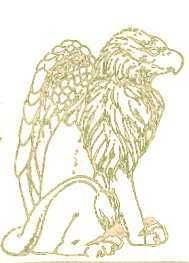Search for ferns by common name, latin name, USDA Zone, or by keywords like whether the fern is Evergreen, Sub-Evergreen, Semi-Evergreen, Deciduous, or Wintergreen or just browse our current fern selections.
Victoria Lady Fern (Athyrium filix-femina 'Cruciato Cristatum')
Victoria Lady Fern (Athyrium filix-femina 'Cruciato Cristatum')
The original parent of the Victoria Lady Fern, Athryium filix-femina 'Victoriae' was a very erect plant almost four feet in height with unique percruciate, or lattice-like, onstruction. The narrow fronds have pinnae (leaflets) that cross each other at 45 degree angles, making for a unique and highly structural lattice look with diamond shaped spaces between the pinnae, and neat, even tassels on the tips, all set against a green to light pink stipe (stalk). The result is an impressive and lacy spray that adds a dramatic texture to any garden. Good forms should consistently show the same excruciatingly crossed frond pattern and even tassel formation as the original parent plant. While the striking, structural look of this fern has been compared to lattice, crossed daggers, and even forked lizard tongues, I like to think of it as a lovely, lacy, treasure map, where "x" marks the spot . . . again and again and again! Like other English Lady Ferns, the fronds are somewhat brittle and are best protected from high winds to avoid premature breakage. And like other English Lady Ferns, it prefers an evenly moist location with early morning or late afternoon sun exposure.
Frond Condition: Deciduous
Mature Height: 12-40
Origin: England
Cultural Requirements: Partly Shaded, Full Shade, Evenly Moist
USDA Zone4,5,6,7,8
Judith's notes on cultivar origin and quality:
I cannot tell you how many times I have been asked the question, "Why doesn't my Victoria Lady Fern look like the one in the book/picture?" The answer is wild genetic variation and poor cultivation practices!
Although it has ben echoed from early Victorian times that this form comes "true" from spores as regards its cruciate and cristate condition, I was gratified to find George Schneider's advice in his 1894 work, The book of Choice Ferns, that although sprolings very often exhibited some of the distinctive characters of the original parent they all different more or less. It has been my experience that the further along we have come from the original progeny the less "true" successive generations have been. In other words, every time this fern is sown from spore, there is radical variation between the individuals, and often the bulk of them will fail to demonstrate the defining and distinctive characteristics of the original cultivar. Poor variations often have inconsistent crossing on the pinnae, and malformed or depauperate crests, and should be discarded (and please do not tissue culture the bad ones!). Good forms should have a consistent, narrow pointed frond, with every row of pinnae and crossing at a more or less 45 degree angle. Crests should be even and consistent as well, and not wildly flattened or splayed. Some growers have decided the original name was not catchy enough, and I have also seen this old cultivar tissue cultured and sold under the name "Dre's Dagger."
The plants I am offering now were done from tissue culture from two selected forms of this fern, one in my garden and one I sent to Dr. John Mickel many years ago. The one I sent to Dr. Mickel seems to be more consistently in character than the one I selected from my collection to have reproduced. I have grown these now for years and I have discarded and continue to discard any forms that are not true to form, so that only the best representations of the cultivar are sold.











